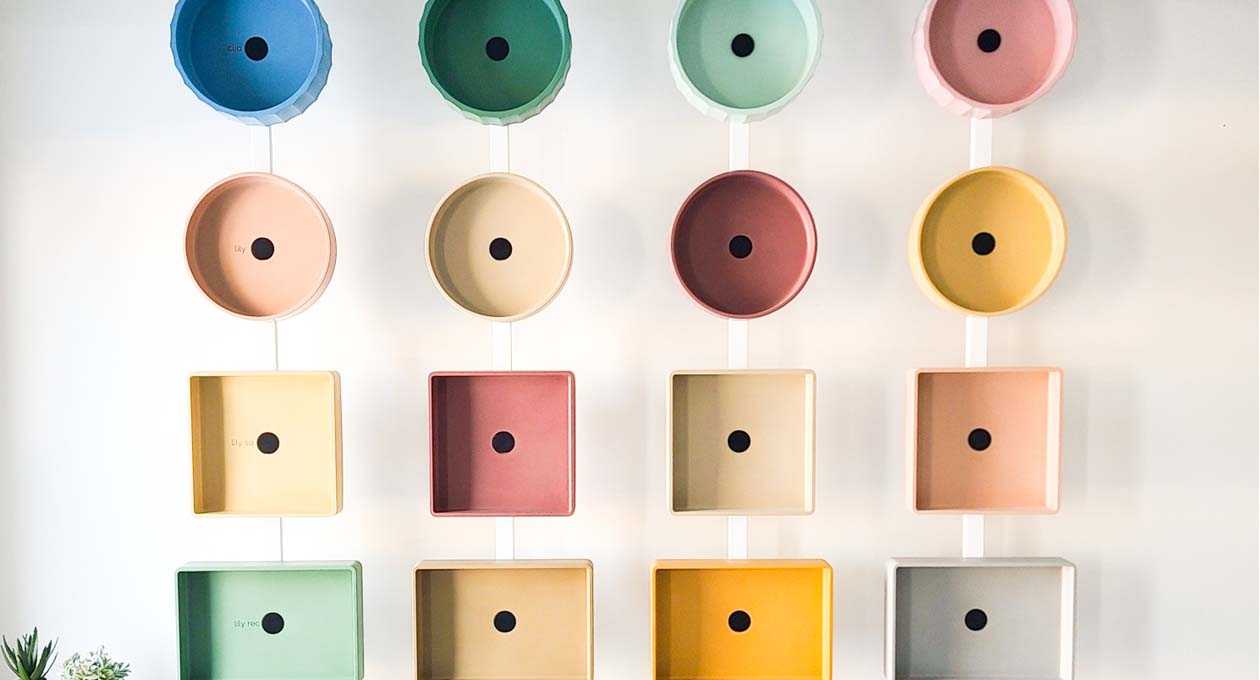
The Evolution of Concrete in Modern Home Design
Concrete has long been associated with industrial construction, but today, it has evolved into one of the most sought-after materials in modern home design. Once valued solely for its structural strength, concrete is now appreciated for its versatility, durability, and aesthetic appeal. From countertops and sinks to statement furniture and decorative elements, concrete has seamlessly transitioned from functional to fashionable. In this blog post, we’ll explore its historical journey, technological advancements, and why it has become the perfect balance of form and function for contemporary living spaces.
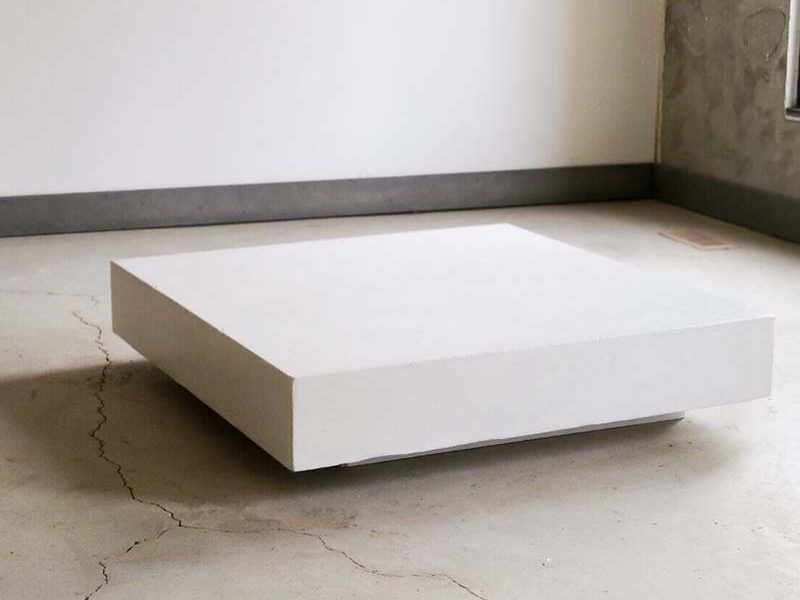
A Brief History of Concrete in Design
Concrete dates back to ancient civilizations, with early versions used by the Egyptians and later refined by the Romans. The Roman Pantheon, built around 126 AD, is a testament to concrete’s longevity. However, for centuries, concrete remained primarily a construction material, used in foundations, bridges, and roadways.
In the 20th century, concrete started appearing in architectural design, notably in Brutalist architecture, which embraced its raw, unpolished aesthetic. While this movement was divisive, it laid the groundwork for the material’s acceptance in design-forward applications. Today, concrete has evolved far beyond its utilitarian roots, becoming a design element that complements modern and minimalist aesthetics alike.
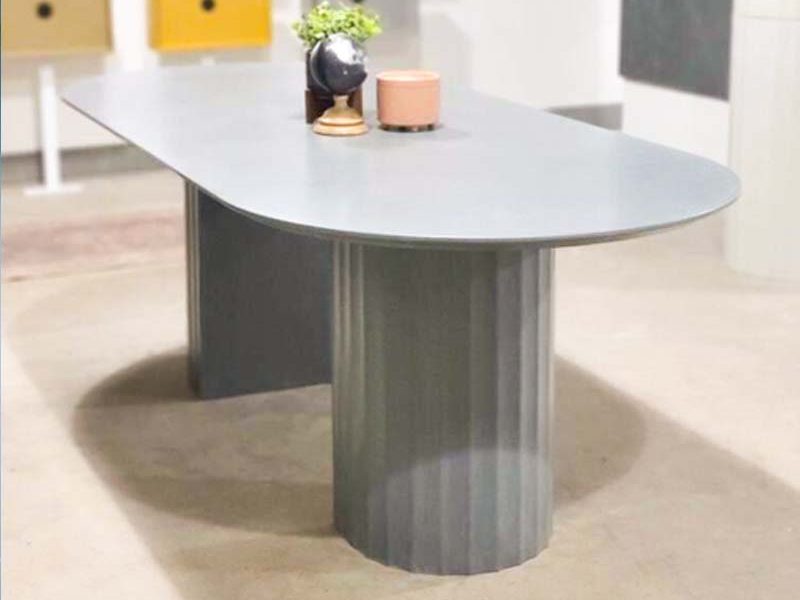
Technological Innovations in Concrete Design
Advancements in material science have played a major role in concrete’s rise in interior design. Innovations have addressed concerns about weight, porosity, and maintenance, making concrete more adaptable to home use. Some key advancements include:
1. Lightweight Concrete
Traditional concrete is heavy, making it challenging for residential applications. However, modern lightweight concrete formulations use aerated technology and fiber reinforcements to reduce weight while maintaining strength, allowing for easier installation and broader use in furniture and countertops.
2. High-Performance Sealants
One of the primary concerns with concrete surfaces, especially in kitchens and bathrooms, is porosity. Without proper sealing, concrete can absorb water and stains. New high-performance sealants now provide water, stain, and heat resistance, making concrete an even more practical choice for home surfaces.
3. Customization and Casting Techniques
Advances in casting technology allow for seamless, customizable designs, including integrated sinks, curved countertops, and textured surfaces. Concrete artisans can now produce bespoke, one-of-a-kind pieces that cater to a homeowner’s specific aesthetic vision.
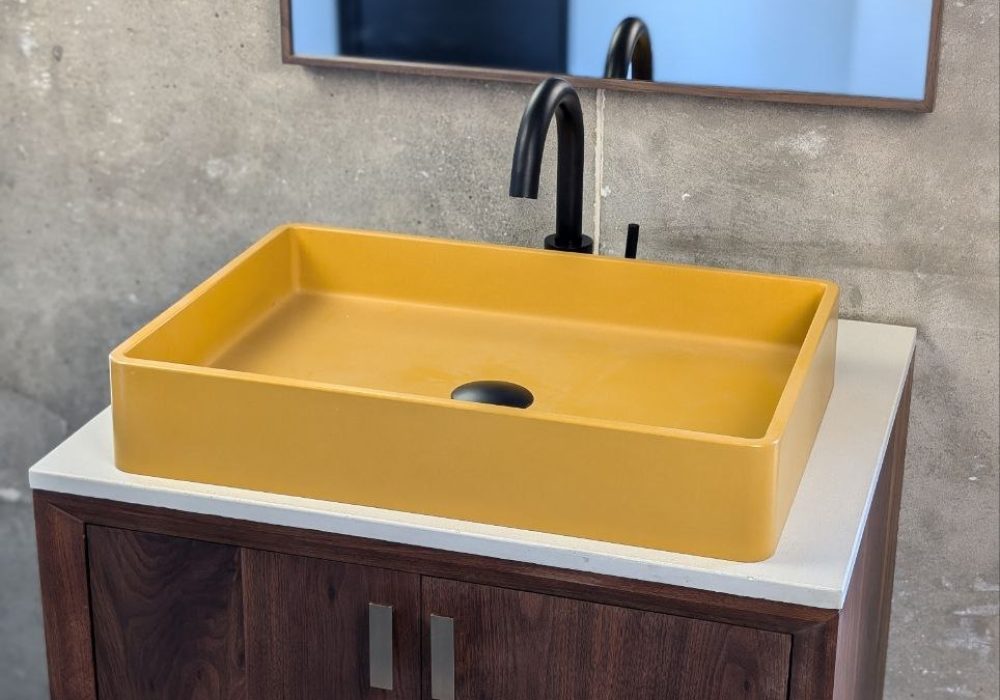
Concrete in Modern Home Interiors
Concrete is no longer confined to industrial spaces—it has become a key feature in modern homes. Here’s how it’s making a statement in contemporary interior design:
1. Concrete Countertops
Concrete countertops offer a sleek, minimalist look while being highly durable and heat-resistant. Unlike granite or quartz, which come in fixed patterns, concrete allows for custom colors, textures, and finishes, making each countertop unique.
2. Concrete Sinks
Concrete sinks blend form and function beautifully. With their smooth yet organic look, they bring a touch of modern elegance to bathrooms and kitchens. The ability to create custom shapes and colors, including integrated sinks, has made them a favorite among designers looking for something distinct yet highly practical.
3. Concrete Statement Pieces
From dining tables to coffee tables and even fireplaces, concrete is being used to craft stunning statement pieces. Its ability to take on various textures, finishes, and pigments allows homeowners to introduce a natural, industrial, or even luxurious feel into their interiors.
4. Concrete Flooring & Walls
Polished concrete floors have become a staple in modern homes due to their durability, low maintenance, and contemporary aesthetic. Similarly, concrete accent walls can add depth and texture, creating a focal point without overwhelming the space.
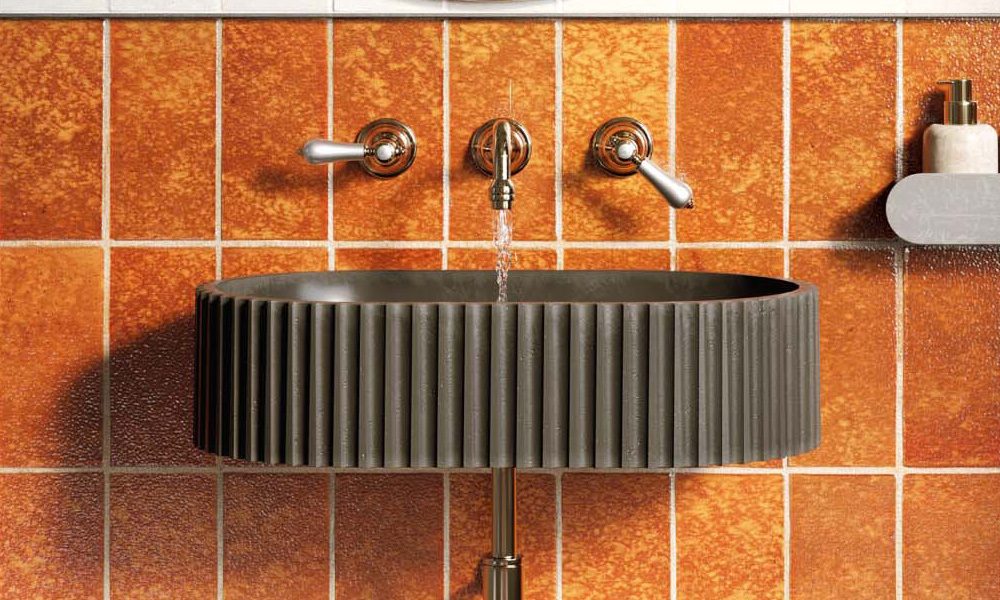
The Balance of Form and Function
One of the biggest reasons concrete has found a place in modern interiors is its perfect balance of aesthetics and utility. Unlike other materials that prioritize either beauty or durability, concrete effortlessly delivers both.
Concrete is incredibly resilient, heat-resistant, and long-lasting, making it ideal for high-use areas like kitchens and bathrooms.
When sourced and produced responsibly, concrete can be an eco-friendly material. Many manufacturers now incorporate recycled aggregates or utilize sustainable production methods to minimize environmental impact.
Concrete’s neutral tones and customizable finishes allow it to adapt to various design styles, from modern minimalism to rustic and industrial chic. Whether polished to a high sheen or left raw for an organic feel, concrete remains visually striking yet versatile.
Conclusion: The Future of Concrete in Home Design
Concrete has come a long way from its days as a purely structural material. With technological innovations, improved design techniques, and a growing appreciation for its unique aesthetic, concrete has firmly established itself as a go-to material for modern home interiors. Whether used for countertops, sinks, or statement furniture, it continues to prove that durability and beauty can go hand in hand.
As designers and homeowners continue to push boundaries, the future of concrete in home design looks brighter than ever. If you’re considering integrating concrete into your space, the possibilities are endless—customization, durability, and timeless appeal make it a truly investment-worthy choice.
Contact us today for a free consultation on how to incorporate modern concrete interior design elements into your home or business.



